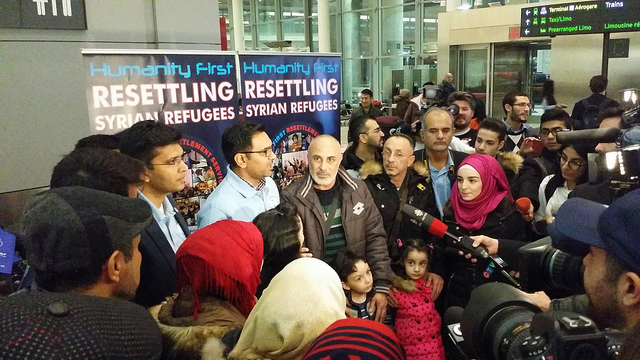Television news has recently provided images of asylum seekers walking across frigid Canadian border crossings in Manitoba and Quebec. Incredibly, many of the people trudging through the snow are from African countries, such as Somalia and Sudan. Their journey most likely began with a flight from Africa to Brazil, followed by a dangerous ground passage through several South and Central American countries, as well as Mexico and — finally — the U.S. And they had to have been desperate for safety to risk their lives on such a perilous voyage.
Trump closes the border
Most of the newcomers planned to claim asylum in the U.S. But U.S. President Donald Trump issued an order in late January, closing the border to anyone from seven predominantly Muslim countries. He also placed all refugee admissions on hold until at least the end of May. As a result, he has been challenged in American courts — the outcome of which remains unclear. More recently, the U.S. administration instructed police officers, along with immigration and customs officers, to round up people who Trump calls “illegals” and deport them. The order allows this to be done without hearings or due process.
Push and pull
That’s the push for desperate people who are arriving in Canada. The pull is our emerging reputation as a country friendly to asylum seekers. After the U.S. refugee ban was announced in January, Prime Minister Justin Trudeau said on Twitter, “To those fleeing persecution, terror and war, Canadians will welcome you, regardless of your faith.” After all, Canadian Immigration Minister Ahmed Hussen was born in Somalia and was once a refugee himselfm, a fact that isn’t lost on asylum seekers.
Canada welcomed 56,000 refugees in 2016, and 18,000 of those were private sponsorships from church and community groups. The U.S., with a population 10 times as large, accepted 85,000. For the year 2017, Ottawa has lowered its target to 40,000, with 16,000 of those privately sponsored. Minister Hussen says that number remains, at least for now. That comes as a disappointment to many, community-based groups who want to help with refugee sponsorship.
To provide some perspective, the United Nations says there are 65 million displaced people in the world. About 40 million who have been forced to flee their homes remain internally displaced within their own countries. Another 21 million have been designated by the UN as refugees and await resettlement or a chance to go home. A final three million are asylum seekers around the world. Given those numbers, Canada’s promise to resettle 40,000 refugees in 2017, while commendable, is decidedly modest given the need.
The kindness of strangers
I’ve been struck by the civility with which the newcomers have been treated by police officers and border officials. Take, for example, a guard on Manitoba’s Canadian-American border, who helped asylum seekers through the deep snow. “They are human beings too,” he told a television reporter. People in the small border towns of Emerson, Man. and Hemmingford, Que. have been friendly, too, although a local official in Emerson warned that the town isn’t equipped to handle hundreds of new arrivals. In contrast, another television interviewee said that while he’s in favour of “legal immigration,” he has no sympathy for the people arriving at remote border crossings. “Too bad, so sad,” he said, cynically.
Nevertheless, people in danger of persecution in their home countries are not illegals. They deserve a hearing, and if they’re indeed refugees, international law says that they must be protected.
Compassionate politics
We must begin to think in different ways about people forced from their homes by wars, violence and — increasingly — climate change. If we cannot build more compassionate politics and populations, then we’re in for a Hobbesian scenario: increasingly authoritarian governments claiming to protect us from what they see as “the hordes at the gate.”
This piece appeared with the United Church Observer on February 23, 2017.



